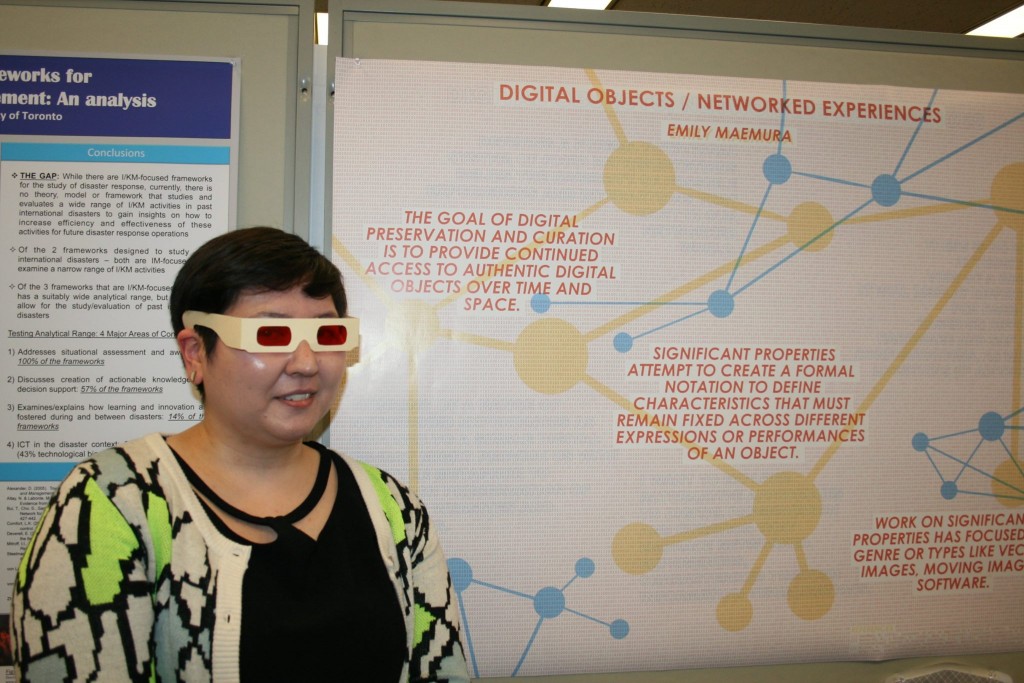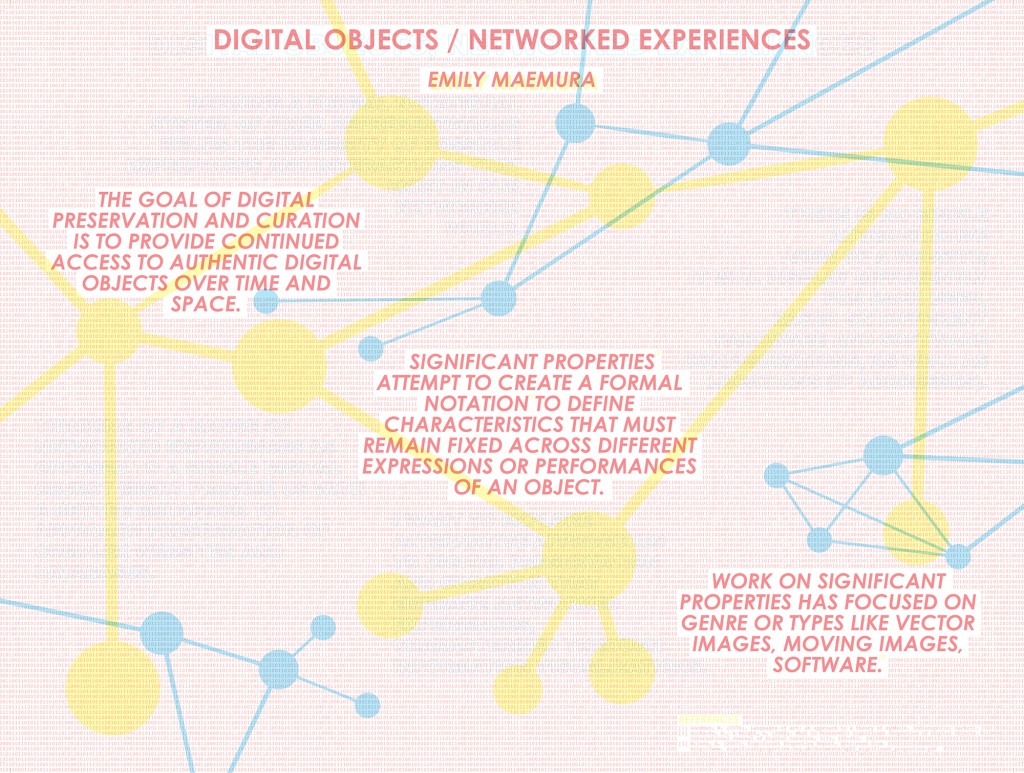Digital Objects, Networked Experiences wins Best Poster award at the iSchool PhD Research Days 2015
Congratulations to Emily Maemura, PhD student at the iSchool and researcher at the Digital Curation Institute!

The poster is rather tricky to appreciate online, as you can see below – click the image for a large version. It plays with the viewer’s perception. Part of the experience was a set of glasses, as pictured in the photograph above.
Emily Maemura explains the poster:
This poster attempts to address and question the nature of digital objects, in particular the tensions between fixed formal notational systems, like significant properties, and the more varied experiences of a single ‘object’ across different experiences and interfaces. The poster itself embodies this tension, as both a fixed, printed object and a variety of experiences reliant on the knowledge, and availability of a simple ‘viewing technology’ (red filter glasses). When the red glasses are worn, the red and yellow is harder to distinguish and cyan text is made visible, presenting an alternate text/reading. Legibility of the different text also varies depending on the distance between the viewer and the poster.
These varied experiences cannot be recreated through the digital view (in this post) but certain snapshots, snippet, can be presented. What are the significant properties of this poster? What is necessary to recreate the poster as an object? As an experience?
Visible text:
- The goal of Digital Preservation and Curation is to provide continued access to authentic digital objects over time and space.
- Significant Properties attempt to create a formal notation to define characteristics that must remain fixed across different expressions or performances of an object.
- Work on Significant Properties has focused on genre or types like vector images, moving images, software. (JISC reports)
Hidden text (visible with glasses):
- Defining a formal notational system for fixed representations of digital objects belies the diversity of possible experiences and interactions that exist in our networked world.
- There is no single authoritative view of a website; it will display differently for each user, based on different hardware and software configurations, as well as locations (IP addresses).
- Thinking of a range of networked experiences as opposed to a single digital object might provide us with a better metaphor to approach preservation of complex websites and databases.
- I want to explore alternative approaches to digital preservation and curation that embrace networked experiences characterized through information visualizations.
You can find a report of the overall event here.

